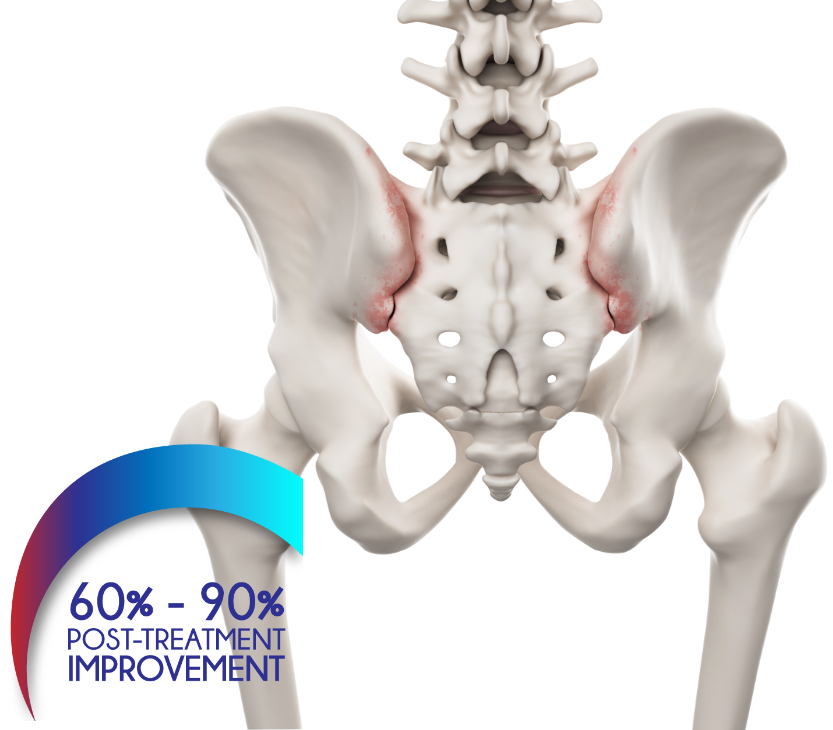Back Pain
Sciatica
Causes, Symptoms
and Treatments.
What is it?
Sciatica is a condition wherein the inflammation or compression of the sciatic nerve, a large nerve extending from the lower back and hips down each leg, leads to severe lower back pain.
COMMON CAUSES
Sciatica is a type of pain that occurs when your sciatic nerve is pinched, inflamed, or compressed. The sciatic nerve can get compressed for several reasons, including the growth of bone spurs, herniated discs, tumors, lumbar spinal stenosis, etc. In some cases, sciatica may also occur due to muscle spasms in the back, pregnancy, obesity, diabetes, or age-related wear-and-tear of the spinal components.
MAIN SYMPTOMS
Sciatica leads to radiating pains that extend to every part of the body connected to the sciatic nerve. The sciatic nerve runs from the lower back, down the hips, and the back of each leg, leading to pain and discomfort in the lower back, buttocks, thighs, and calves. The pain can be mild or severe, producing sharp, stinging, burning, or electric sensations. Sciatica pain usually affects one side of the body more than the other.
Call us or submit this form to make a back pain appointment!
Your information is encrypted and secure. By registering you confirm that you accept Terms and Conditions and Privacy Policy
SCIATICA
TREATMENT
SCIATICA TREATMENT
EPIDURAL INJECTIONS
Epidural steroid injections are delivered into the regions around the affected sciatic nerve roots to minimize the inflammation caused by nerve compression. Cortisone injections suppress the inflammation around the affected nerves to minimize the pain sensations. Epidural steroid injections produce immediate results, but they only last a few months. In the meantime, you must continue your physical therapy to address the root cause of sciatica, ensuring long-term pain relief.
PHYSICAL THERAPY
Once the severe and acute pain passes, your doctor may recommend a physical therapy routine to restore mobility and flexibility in your muscles to prevent future incidents. Physical therapy for sciatica usually includes posture correction, stretches, and exercises to improve muscle strength and flexibility. Physical therapy is crucial because it addresses the root cause of your sciatica, strengthening your muscles and joints to minimize nerve compressions.
PHYSICAL THERAPY
Once the severe and acute pain passes, your doctor may recommend a physical therapy routine to restore mobility and flexibility in your muscles to prevent future incidents. Physical therapy for sciatica usually includes posture correction, stretches, and exercises to improve muscle strength and flexibility. Physical therapy is crucial because it addresses the root cause of your sciatica, strengthening your muscles and joints to minimize nerve compressions.

WHAT TO EXPECT AFTER
SCIATICA TREATMENT
POST-TREATMENT IMPROVEMENT
Minimally invasive treatments for sciatica don’t involve any downtime, and you can resume walking and all other normal activities the same day. However, the doctor will provide a thorough list of recovery guidelines to ensure a smooth recovery. You must also continue your physical therapy to strengthen your muscles, restore mobility, increase flexibility, and ensure long-term pain relief from sciatica.
Do you have any symptoms? CALL US NOW
Will your health insurance cover your pain treatment?
Most pain treatments are covered by most health insurances, including medicare. Our insurance specialists are available to discuss your options call us to get started at (332) 263-3414 or fill out the form below:
